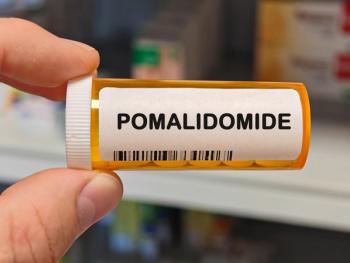
Aligning Care Initiatives With Accreditation Standards
Drs Haumschild, Gilreath and Howe discuss the use of quality initiatives to support pharmacy accreditation through organizations such as URAC.
Episodes in this series

Ryan Haumschild, PharmD, MS, MBA: When we’re talking about quality care, what are some of the quality initiatives that you have going on? What are some of the things that you’re doing for your patients, as we think about different accreditation bodies like URAC [Utilization Review Accreditation Commission] and The Joint Commission?
Jeff A. Gilreath, PharmD: In terms of quality initiatives for accreditation, these are probably evolving. Initially when I started in the clinic, URAC accreditation wasn’t known to us. We simply tried to go where the need was and identify challenges that the patients faced and help bridge the gap to getting their medications. When I first started in the clinic, we’d send a prescription and oftentimes we’d know it would get filled. But as the payer landscape has changed and more prior authorizations were required for these medications, it became difficult to gain access for medications. Closing the loop on this for patients is paramount, and having URAC accreditation at your institution helps with that because you’re able to fill more medications in-house and provide the service that you want to provide for your patient.
Ryan Haumschild, PharmD, MS, MBA: Excellent. Sharita, you’re doing a lot around quality care. It may not always be accreditation-based, but what are some of the initiatives or important things you’re trying to do for that patient-centered model?
Sharita Howe, PharmD: Before I get to that question, I wanted to circle back to something Jeff said. Jeff pointed out the pharmacist’s role in capturing these patients and the education that the pharmacist provides. It’s pretty funny. Oncologists and oncology offices are in this position now where we have the trifecta of patient trust and care. We have a nursing team, a physician team, and pharmacists on board. There are a lot of academic institutions that have the pharmacy, and a lot of community-based practices are adopting this MID [medically integrated dispensing] model.
To add to what he was saying, we need to embrace this collaboration. In the academic setting, it looks more like collaborative practice agreements where the pharmacists are providing education as well as even making some treatment decisions based on symptoms they may have noticed while the patient was on treatment. The pharmacists are really involved there. In the community practice setting, it may be easier for us to dive into treating patient symptoms. No matter how your practice goes about implementing initiatives around MPNs [myeloproliferative neoplasms], it’s important to make sure we’re capturing all of these different levels of educational opportunities and opportunities to assess these patients. That’s 1 of the benefits that we need to key in on. I wanted to add that to Jeff’s last statement.
Ryan Haumschild, PharmD, MS, MBA: Pharmacy plays a strong role in both the academic and community settings. It may not look the exact same, but that pick-up and patient-centered care as we’re titrating outcomes make it so important to have a pharmacist on the team. Jeff just spoke to some of the quality initiatives and how they play into accreditation of The Joint Commission and URAC. You may not be URAC-accredited, or maybe you are, but what are some of those quality initiatives that you’re doing? How important are the quality initiatives to that patient-centered care model?
Sharita Howe, PharmD: These initiatives are important. We need to develop initiatives around MPNs because MPNs can be so diverse. We have some patients who will present to the clinic because they had a routine office visit and, on a CBC, [complete blood count] had thrombocytosis or an elevated red blood cell count.
When we’re looking at these patients, you may have other patients who present because they’re having constitutional symptoms or because they possibly had a thrombotic event. We have patients coming into the office and also having patients at different ages and different prognoses, so we have to create initiatives around MPN so that we’re able to capture and treat these patients at a level that we’re keeping these patients well, keeping their quality of life high, and also possibly aware of when they may transform, because this disease can be transformative. If we’re able to put these initiatives in place, we may be able to start to collect those data.
At our practice, one of the initiatives that we put into place is to do that symptom assessment form during our refill call. We’re engaging these patients to see where their symptoms are. Hopefully by adding that piece of the puzzle, they’re getting assessed by their physicians, we’re adding the piece of symptoms that the patients are experiencing, and then along with laboratory abnormalities, we may be able to start to collect data so that we can predict when these patients are going to transform, if they’re going to, or we’ll be able to predict ahead of time and start to treat their symptoms if they’re starting to become refractory or intolerant of therapy. That’s why it’s important to have some of these initiatives in place.
Ryan Haumschild, PharmD, MS, MBA: Quality initiatives are so important because it shows that we’re trying to be intentional about the patient care journey. It’s nice that they also align with accreditation. Speaking from experience, working with URAC and The Joint Commission, they’re now transforming the way they view quality, where now they don’t want you to have any quality follow-up, but like you mentioned, having some specific initiatives.
How do you create those measures of success? As much as sometimes URAC provides more operational benefit, I’m seeing more of that innovation from the clinical benefit as well. By having quality initiatives, it allows us to be much more intentional about the things that we’re doing. We have a measure of success that we’re focusing on, and ultimately as we pivot through different quality initiatives, we’re hopefully improving the entire program. That’s where it comes into play.
Externally, as payers and manufacturers look at specialty pharmacies or pharmacies in practice, they want to have ways to know whether the operational workflows or if the quality care that’s being provided is actually improving outcomes for that patient. That’s why quality is so important and why you’re seeing a lot of these accreditation bodies starting to pivot to become more specific in what they’re looking for, and looking at different quality initiatives projects that you bring forward that identify the need of our program, academic or community, agnostic, because everyone has different areas of focus and different areas of improvement. That’s great the way you both brought your different perspectives and it’s great to hear the things that you’re talking about.
Transcripts edited for clarity.
Newsletter
Stay informed on drug updates, treatment guidelines, and pharmacy practice trends—subscribe to Pharmacy Times for weekly clinical insights.














































































































































































































